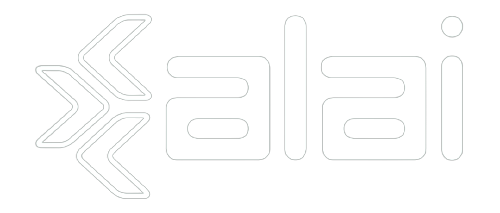The gas market in South America
- Análisis
The international natural gas market has seen developments in the last quarter of 2020: an increase in supply by the French company TOTAL in Mozambique; a slight recovery in the international price; and modifications in South American agreements in export destinations. This note will outline the situation of the natural gas market in South America and the outlook.
Natural gas is a combination of several light gases in which methane predominates. Its use is energetic, mainly for electricity generation. There are two ways of transporting it: in its gaseous form and its liquid or liquefied form. The gaseous condition m by pipeline and is cheaper if the infrastructure is available. In the liquefied form, the gas is cooled and transported in tanks without channels to cross several kilometres. The advantage of liquid gas is that it has 600 times less volume than the gaseous form. In Mozambique, another selling point compresses natural gas, used for hydrogen batteries.
In Latin America, the leading suppliers of gas in its gaseous form is Bolivia. In 2004, the Bolivian government nationalised hydrocarbons to be administered by Yacimientos Petrolíferos Fiscales Bolivianos (YPFB), a state-owned company that contributes resources to the public purse. Bolivia had an export deal already signed with Brazil in 1999 and with Argentina, adjusted in 2004. The export agreements fixed a price indexed to the Bolivian premium higher than the international quote.
Brazil is the leading importer of Bolivian natural gas, with almost 60% of the total. By 2018, hydrocarbon generated 15% of electricity. Of the total used, 30% of the gas was of Bolivian origin. Since 2015, imports have been on a downward trend due to Brazil's electricity power matrix's transformation due to the expansion of alternative power projects.
The other 40% of Bolivian gas goes to Argentina. Its imports began in the 1970s and peaked in 2017, and then varied their trend. Argentina is the largest producer of natural gas in Latin America. Natural gas is the most used power source in the country, and domestic production was not enough. Thus, it imported natural gas in its gaseous form, from Bolivia and liquefied, from Trinidad and Tobago and the USA. In 2018, 70% of the electricity generated came from this hydrocarbon.
In June 2020, the Argentine government defaulted because the Bolivian administration of Jeanine Áñez requested an advance on import payments. Three months later, YPFB did not reach the annual production agreed in the stipulation. With this, the pact between the two countries suffered a revision and meant that, in 2021, Argentina would import smaller quantities of gas at a lower cost. However, on 24 December 2020, the newly reelected Government of Bolivia announced a mega natural gas field discovery in the southern region, an area administered by the Spanish company Repsol, the Anglo-Dutch company Shell the Argentinian company Pan American Energy. This finding could lead to a new arrangement with Argentina. The export of natural gas is indispensable for the Andean country because of its importance for fiscal revenue and international reserves.
There are two major exporters of liquefied gas in Latin America: Trinidad and Tobago and Peru. The former is the largest seller of liquefied natural gas in the region and has an export-oriented oil industry. The largest companies present are Repsol, Shell, British Petroleum (England), and Phoenix Park Gas Processors Limited (USA). By 2019, Trinidad and Tobago were the world's tenth most significant export of liquefied gas to all continents. Its primary markets were the USA, Spain, Dominican Republic, and China.
Peru is the second-largest wholesaler of liquefied natural gas in the region. Like Bolivia and Trinidad and Tobago, Peruvian production goes mainly abroad. From 2013 to 2017, the leading buyer of Peruvian gas was Mexico. The pact was agreed in 2004 by Repsol for sale to Mexico's Federal Energy Commission (CFE) for 18 years. In 2014, Shell bought the deal. The Mexican and Peruvian press heavily criticised the gas trade agreement since its signature. In Mexico, it was argued that the Peruvian supply would not be sufficient for the enormous Mexican demand. The Peruvian argument was due to suspected foul play in the deal setting. In each region, Henry Hub determines the reference price. However, in North America, the quote plummeted since 2010, leaving an abysmal difference between areas. This valuation differential leaves an extraordinary profit for the contract administrator to buy at the lowest worth in the world and sell at the international rate. The gas arrived in Manzanillo for re-export to the USA.
There are efforts to stop Peru from exporting to Mexico and shipping to Asia, where the return is higher. South Korea has a growing import trend, and China has shown interest in controlling liquefied natural gas in Peru with Luz del Sur's purchase from the North American Sempra Energy, the leading supplier of liquefied natural gas in the country.
Natural gas is presented as an alternative to oil because it is less polluting. However, the power matrix changes to cleaner energies, such as hydroelectric, wind, and solar power, means that it is beginning to lose ground in environmental policies. Latin American countries will continue to produce natural gas because of its importance in electricity generation, international trade, and tax revenues.
Num.4, Year 2021, February 11th
- Carlos de León, Faculty of Economics, UNAM, member of obela.org
- OBELA, Oscar Ugarteche (Coord), Armando Negrete, Carlos de León, Arturo Martínez, Bertín Acosta, Priscila Martínez, Hiromi Ijima.
Del mismo autor
- Financing for Latin America's energy transition 15/12/2021
- Financiamiento para la transición energética latinoamericana 14/12/2021
- ¿Una crisis económica en China? 21/10/2021
- An economic crisis in China? 21/10/2021
- Latin America's post-pandemic energy transition 14/09/2021
- La transición energética latinoamericana pospandémica 14/09/2021
- Transporte terrestre chino en América Latina 02/06/2021
- Chinese land transport in Latin America 02/06/2021
- Chinese ports and docks in Latin America 06/04/2021
- Puertos y muelles chinos en América Latina 06/04/2021








